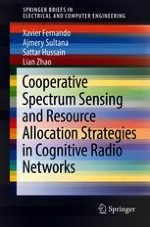Cognitive radio networks (CRN) will be widely deployed in the near future, and this SpringerBrief covers some important aspects of it, as well as highlighting optimization strategies in Resource Allocation and Spectrum Sensing in CRNs. The cognitive approach in radio access is introduced in the first part of this SpringerBrief, and then next the benefits of cooperative spectrum sensing are highlighted and a framework for studying it under realistic channel conditions is described. New exact closed-form expressions for average false alarm probability and average detection probability are derived in this scenario. A novel approximation to alleviate the computational complexity of the proposed models are also discussed.
Once the spectrum opportunities are identified, efficient and systematic resource allocation (RA) shall be performed. The second part of this SpringerBrief describes the taxonomy for the RA process in CRN. A comprehensive overview of the optimization strategies of the CRN RA is also provided. The device-to-device (D2D) communication scenario is discussed, then as a case study and various optimization strategies for the application of the CR technology in the D2D realm is studied. The application of advanced geometric water-filling (GWF) approach in CRN D2D environment for optimum resource allocation is presented in detail. Numerical results provide more insight quantitatively. Overall, this book is suitable for a wide audience that include students, faculty and researchers in wireless communication area and professionals in the wireless service industry.
